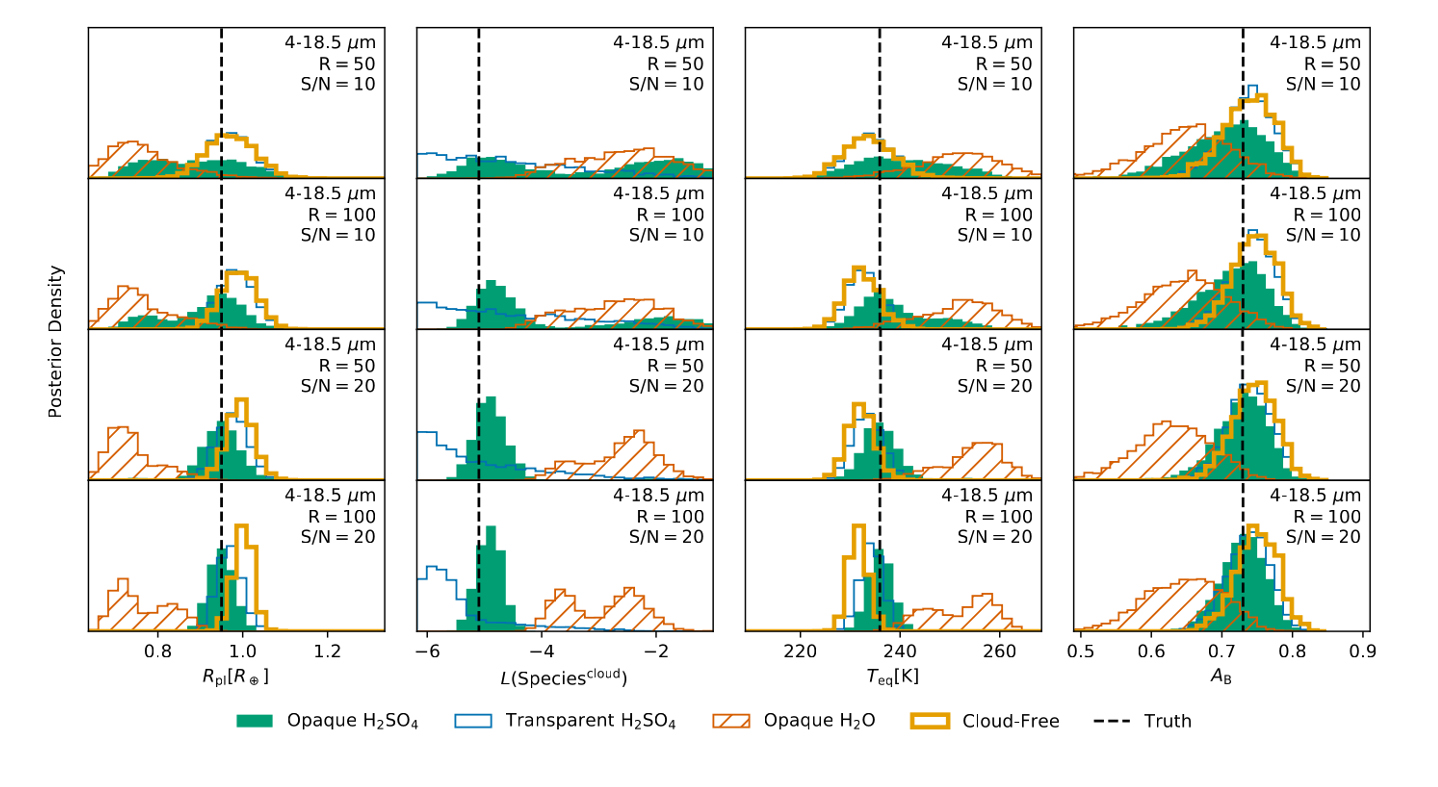How well could LIFE characterize an exo-Venus?
In a recently published study, we investigated how well the LIFE telescope could characterize a cloudy Venus-like exoplanet.
One major goal for the future of exoplanet science is to constrain the atmospheres of habitable zone terrestrial exoplanets. A powerful approach to characterize exoplanet atmospheres is to analyze their spectra via atmospheric retrieval studies. In retrievals, how well an exoplanet can be characterized depends on the accuracy with which its spectrum is measured.
Current and approved future ground- and space-based observatories will not be capable of measuring the spectra of a statistically significant number of habitable zone terrestrial exoplanets. The Large Interferometer For Exoplanets (external pageLIFE) initiative aims to realize a space-based MIR nulling interferometer capable of reaching this goal.
A first step in the LIFE design phase is to derive the requirements necessary to adequately characterize the atmospheres of nearby HZ terrestrial exoplanets. Previous studies in the LIFE series (external pagehttps://arxiv.org/abs/2112.02054; external pagehttps://arxiv.org/abs/2204.10041) derived first requirements for LIFE by retrieving simulated spectra of cloud-free Earth-like exoplanets. In this study, we reevaluated these LIFE requirements by focusing on the key science application of distinguishing a cloudy Venus-like planet from an Earth-like planet. To this purpose, we analyzed the thermal emission spectrum of a Venus-twin exoplanet with our retrieval framework. The opaque cloud layer in Venus’ atmosphere required us to model clouds in our retrievals.
This study has allowed us to:
1. test our atmospheric retrieval routine on a realistic non-Earth-like MIR emission spectrum of a known planet,
2. investigate how clouds affect retrieval studies,
3. further refine the LIFE requirements derived in previous Earth-centered studies.
Full paper: Konrad, B.S. et al. 2023, Large Interferometer For Exoplanets (LIFE): IX. Assessing the Impact of Clouds on Atmospheric Retrievals at Mid-Infrared Wavelengths with a Venus-Twin Exoplanet, External webpage: external pagehttps://arxiv.org/abs/2303.04727

